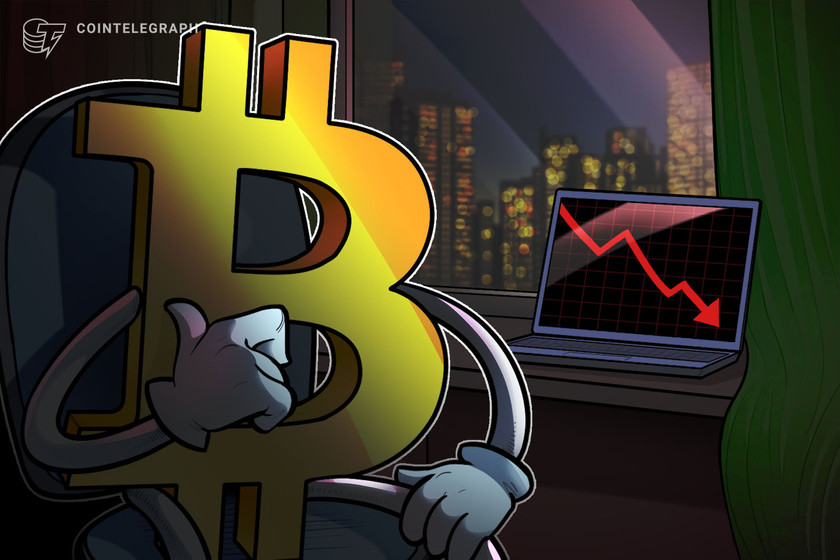Circle’s USDC on track to topple Tether USDT as the top stablecoin in 2022


The USDT-to-USDC market cap ratio fell to its lowest ever in July 2022.
The growth of Circle’s native stablecoin USD Coin (USDC) in the last two months compared to its $66-billion rival giant Tether (USDT) is nothing short of spectacular.
USDT, USDC market cap ratio hits the lowest on record
Notably, USDC’s market capitalization has grown by 8.27% since May, reaching its highest level of $55.9 billion on July 2. In contrast, USDT has suffered an over 19% drop in its market valuation, currently treading around $66.14 billion.


This is the closest USDC has come to challenging USDT’s supremacy in the stablecoin sector based on the diminishing gap between their market caps.
In detail, the USDT to USDC market cap ratio was above “9” in August 2020. However, in July, it dropped to 1.20, the lowest on record, as shown in the chart below.


At the current rate — and with less than $10 billion now separating the two stablecoins — USDC can surpass USDT by market capitalization in a few months, if not weeks.
Interestingly, USDC has already flipped USDT regarding “real volume” atop the Ethereum blockchain.
USDT sails through doubts
Crypto investors have turned cautious since the collapse of Terra’s $40 billion “algorithmic stablecoin” project in May, fearing that the same could happen to USDT. That is primarily due to speculations that Tether’s USDT tokens are not 100% backed by cash and other traditional assets as it claims.
As a result, short-sellers have boosted their bets on the possibility that USDT would soon fall below its $1-peg, with the Wall Street Journal reporting that these bearish positions could be worth “hundreds of millions” of dollars.
Related: Tether is an ‘instrument of freedom’ and ‘Bitcoin onramp,’ says Tether CTO
These bets anticipate that Tether would not be able to redeem all its USDT for a dollar in a “bank run” like scenario. As a result, people would start selling their stablecoin at a discount, breaking the peg.
USDT has a history of going below or above its $1-peg during extreme market volatility, though this was more pronounced in its earlier days.
For instance, in October 2018, the token’s value dropped to as low as $0.85 (on Kraken) amid rumors that one of its sister companies (crypto exchange Bitfinex) is insolvent.


The same happened after the Terra collapse in May, with USDT’s value briefly plummeting to as low as $0.97. Nonetheless, the stablecoin recovered its dollar peg every time.
In contrast, USD Coin has slipped below the usual $0.99-1 only twice since its launch in 2018. It dropped to $0.97 during the “COVID-19 crash” in March 2020, only to recover to $1 and fall again to $0.98 in the same month.


Crypto investors have strengthened their trust in USDC primarily due to Circle functioning as a money service business, registered with FinCEN and other 46 state regulators in the United States. As a result, the firm reports its reserves to the authorities in line with money transmission laws.
Also, Circle is audited by Grant Thornton, a leading global accounting firm.
Related: USD stablecoin premiums surge in Argentina following economy minister’s resignation
Paolo Ardoino, the chief technical officer at Tether, committed in June that they would have their reserves fully audited by one of the top 12 accounting firms. For now, accounting company MHA provides quarterly attestations of Tether reserves.
Everyone is talking about bearish things, but most of them haven’t left the crypto market. They’re just waiting for the bottom.#Bitcoin marketcap decreased by -70% from the top while stablecoin went down by just -11%. pic.twitter.com/dhgDzi9g2A
— Ki Young Ju (@ki_young_ju) June 30, 2022
Until that happens, USDC is on track to close the gap with USDT for a potential flippening event, particularly as stablecoin demand remains high amid global economic turmoil.
The views and opinions expressed here are solely those of the author and do not necessarily reflect the views of Cointelegraph.com. Every investment and trading move involves risk, you should conduct your own research when making a decision.






















